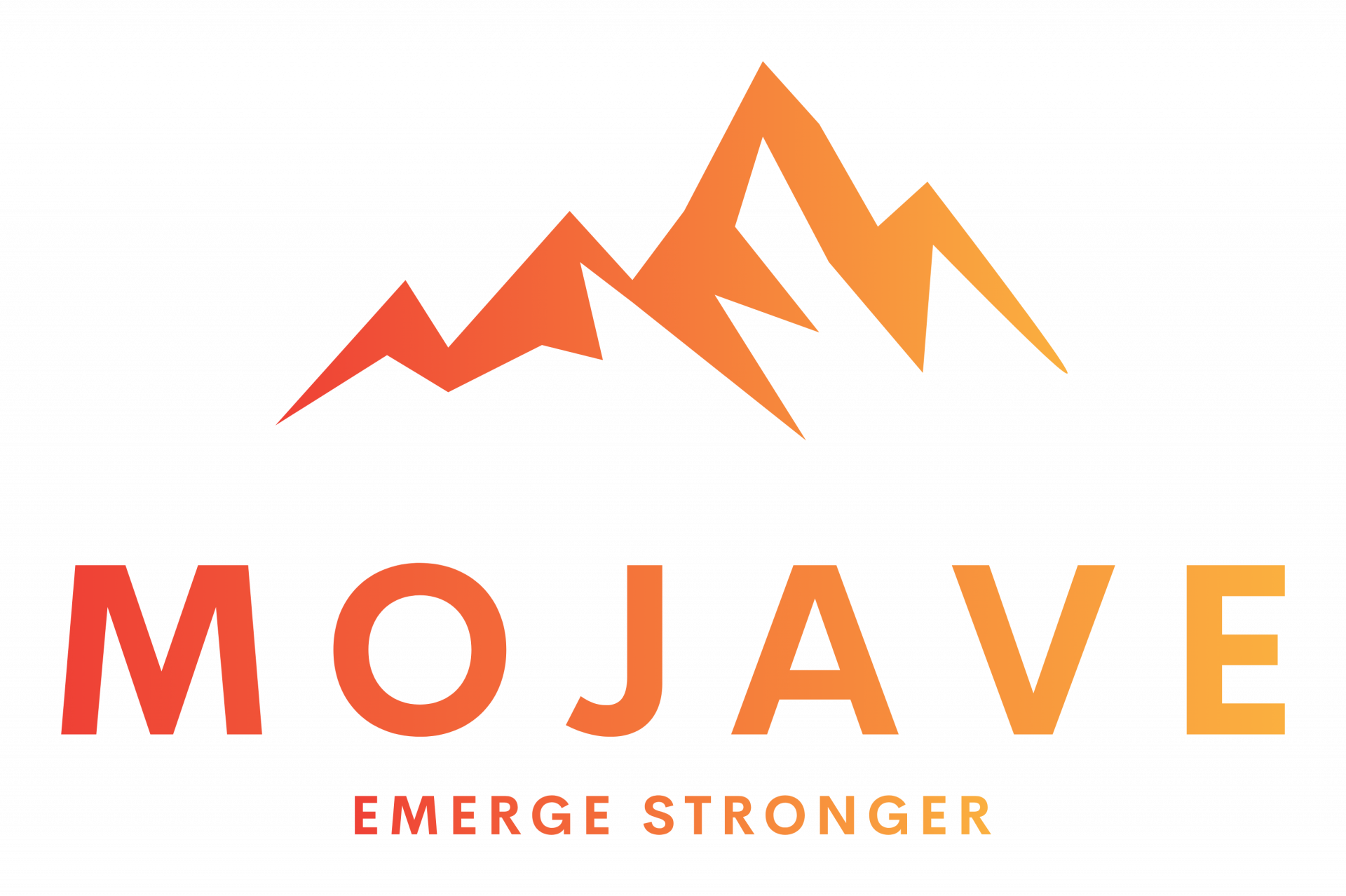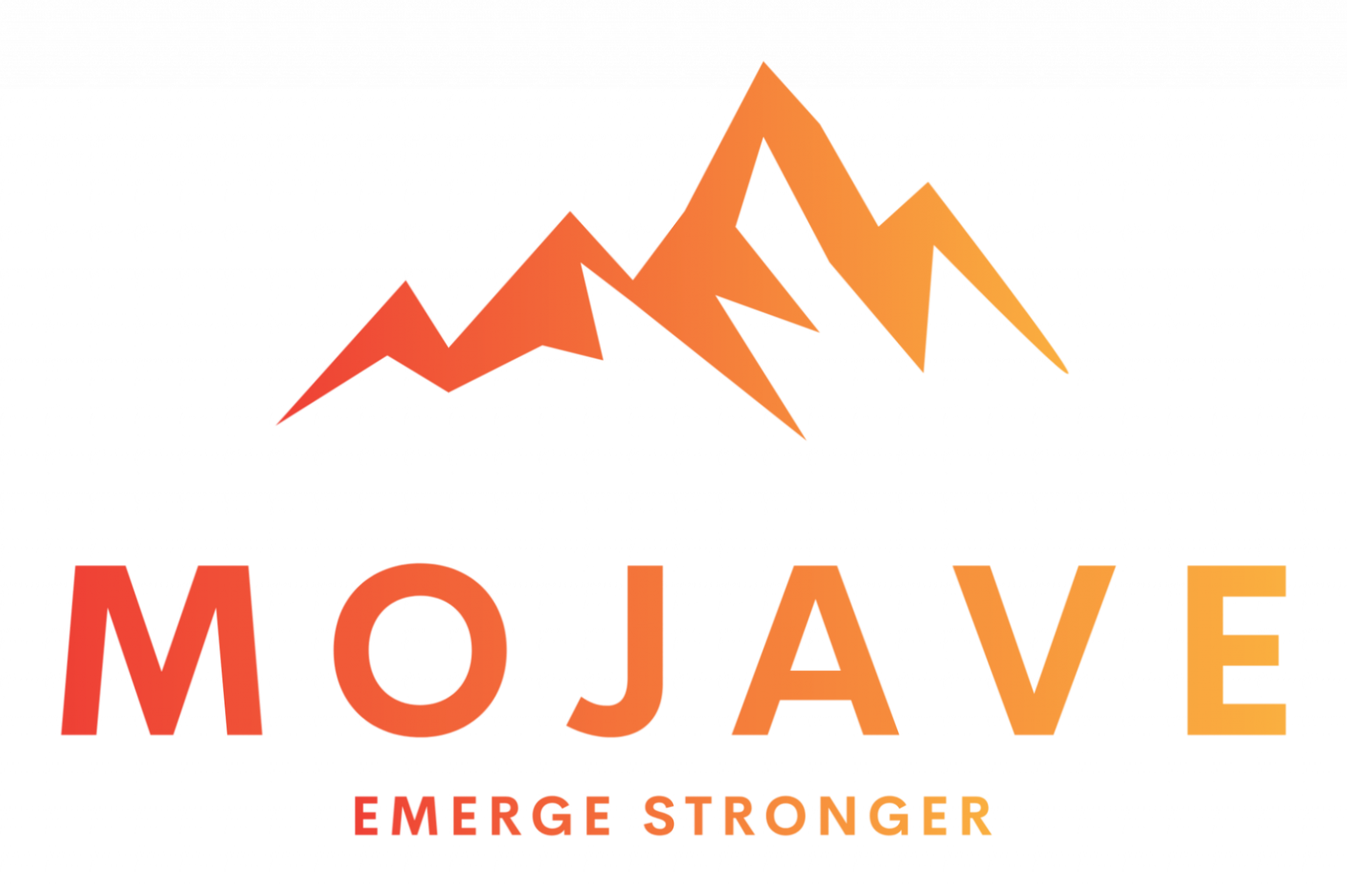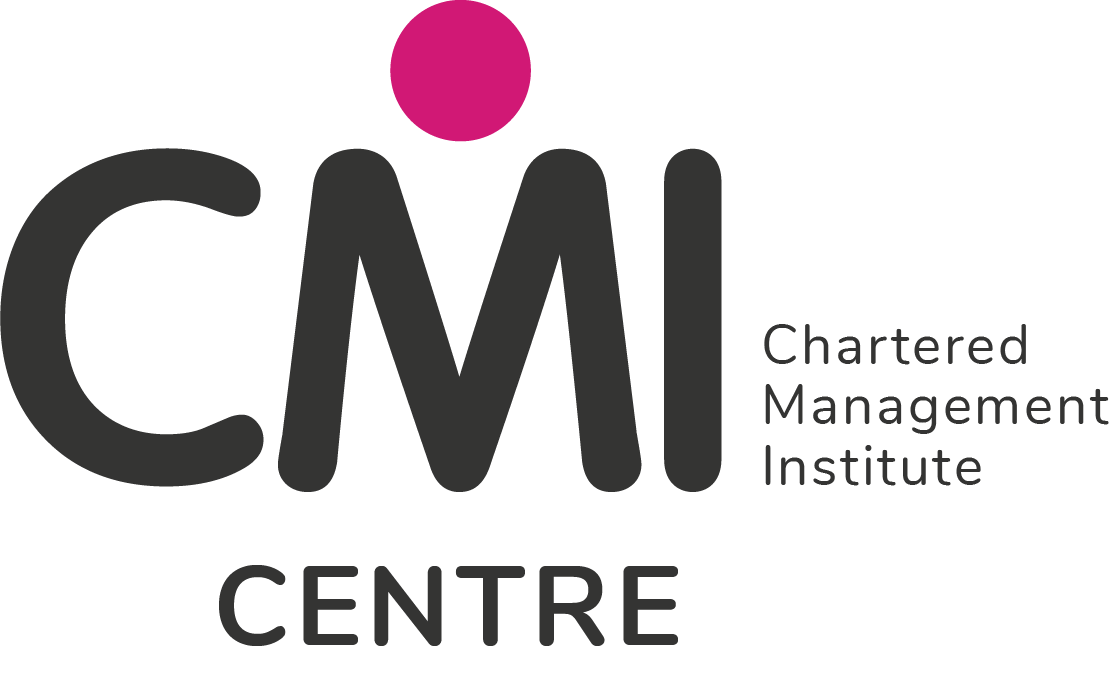Using the OODA Loop to inform innovation
Nov 1
/
Nick O'Sullivan
Every organisation is – or should be – rightly interested in being innovative. Being innovative helps organisations to rapidly identify and implement new ideas and ways of working that enable them to retain a competitive edge. Fail to innovate and prepare to fail. See Kodak and Nokia as examples of what happens when businesses fail to keep up.
Yet for every organisations bravado when it comes to innovation, doing it proves very difficult for most. Why is this? And what can be done about it? This blog will offer some potential reasons and identify some key considerations to enable innovation, and we’ll use John Boyd’s OODA Loop once again to inform our view.
Innovation and OODA
If you haven’t heard of John Boyd’s OODA Loop, it may be worth first checking out our blog from March 2023. From this point on I’ll either assume you have done that, or that you know about it already.
If we use that concept to look at innovation particularly, how might OODA apply? I’ve set out one possible set of answers in Figure 1 below.
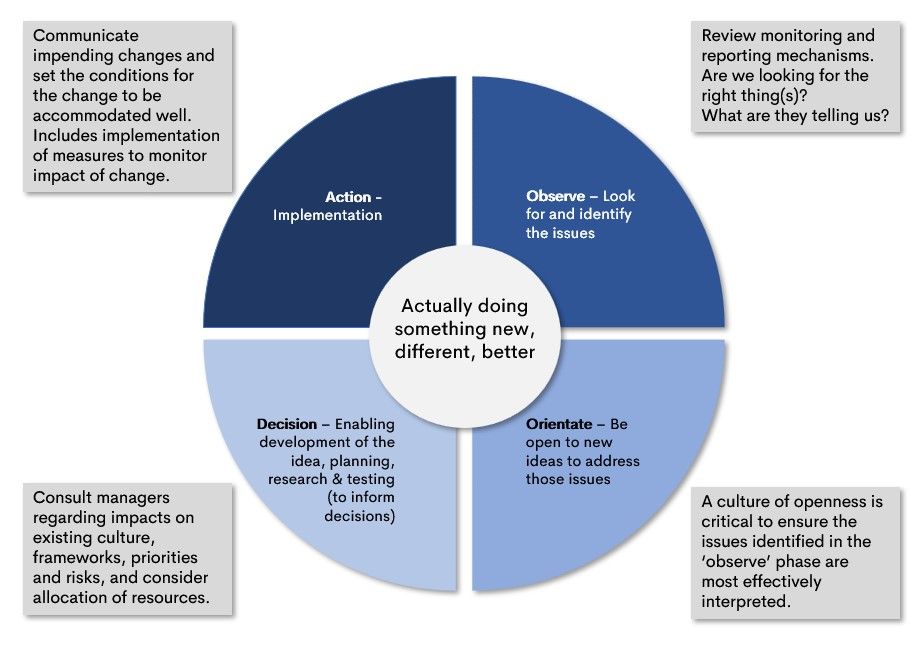
Figure 1.
This might prompt us to ask the question, "What are the key Issues facing our organisation or customers?" If we find no one in our organisation knows the answer, we can already start asking how seriously we can take our claim to be innovative.
This interpretation sees OODA, when viewing innovation particularly, as emphasising the need for the organisation to actively look for and identify the issues it (or its customers/clients) face. The risk if we start our approach to innovation by looking at a capability first, without knowing if that capability is relevant to us, is that we invest a lot of money in something that will have no demand for use. This might prompt us to ask the question, “What are the key issues facing our organisation or customers?” If we find no one in our organisation knows the answers, we can already start asking how seriously we can take our claims to be innovative.
The next phase
The next phase, orientate, is where many organisations trip up. To effectively ‘orientate’ to a new idea, to understand what it is, what it could mean for the organisation, if it’s any good or not, then the first step is that new ideas need to be heard.
Many organisations aren’t well set up to hear new ideas – many of which don’t come from the top, they most often come from the bottom and those that deal with the issues of the organisation (or its customers) everyday. Suggestion Boxes are one way, sure, but if no one feels any suggestion will be acted on no one will put any in the box anyway. To enable bottom led innovation, organisational culture is key; people need to feel they are encouraged to voice their ideas, that they will be listened to and that they will be taken forward. Investment in junior leadership is key; because the junior leaders have to provide the elements of the culture just mentioned, they also have to be willing and able to represent those ideas up the chain. And of course more senior managers are key too, because they will need to listen to the ideas that are received so as not to deter anyone below them in the chain. Orientation could be said to be significantly reliant on organisational culture.
The next step, decision, is also impacted by culture to a large degree. If an idea gets to a level where it is taken up and meaningfully considered, people from across the organisation should be consulted as to what it may mean for the organisation.
What it may mean in terms of impact on existing culture; on existing frameworks, governance, policies and processes; what it may mean for current organisational priorities and risks; what the impact could be on allocation of scarce resources; and in turn what the impact on all of these things could be on operations and possibly even strategy. To be well informed as to all these angles means consulting widely. And that’s not the same as just asking. If you ask and get little response, that’s not really consulting. So we must make sure the experts in our organisations feel willing to inform and discussion around a potential innovation so that a fully informed decision can be made and a plan can be developed. Once there is a plan, its feasibility can be discussed and a decision ultimately made. Which brings us to the final stage of OODA…
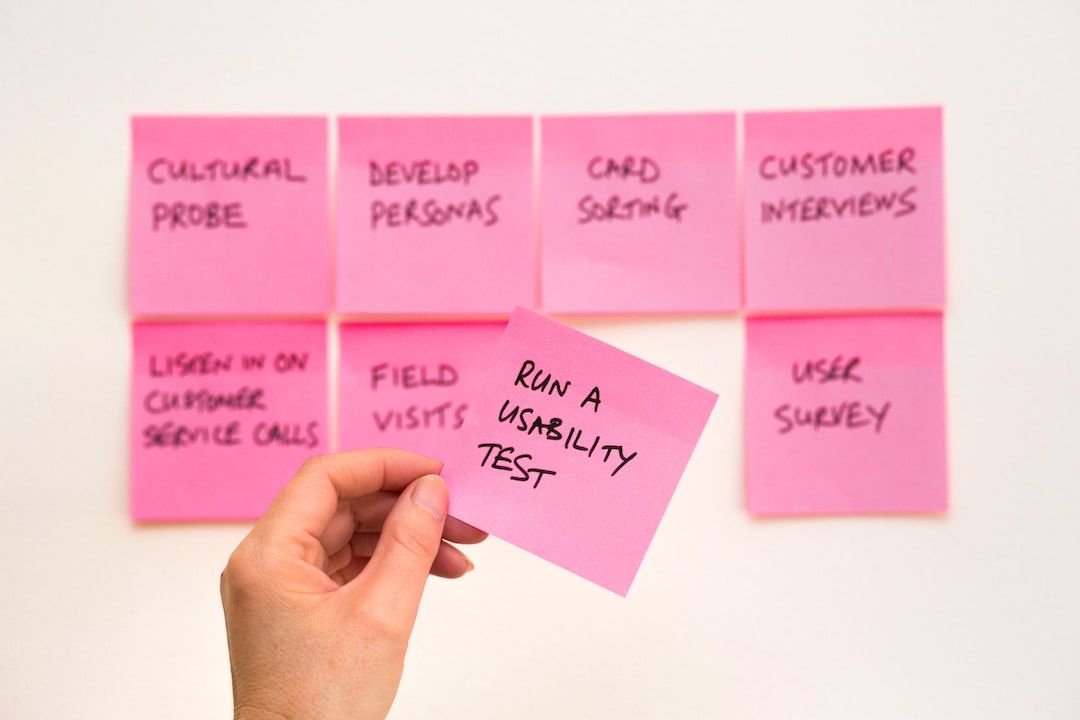
Action will of course be about implementation of the plan. Yet as we all know, no plan survives contact with the enemy… or reality. Things will deviate rapidly (though hopefully not too rapidly or by too much f it was a good plan). Eiether way, implementation should include the ability to monitor the effects of the innovation being rolled out and the frameworks and control measures to enable rapidly adjustments (potentially even pivots) should that be deemed necessary. These things are even more important if looking to apply a more agile methodology to enable rapid development, because agile methodologies by definition involve failure and rapidly learning from errors. In turn, failure and errors mean friction for many within an organisation – possibly the entire organisation – and of the entire organisation hasn’t been prepared to expect and to respond effectively to that entirely predictable friction in advance, then we have failed in our leadership.
Summary
We can never innovate by setting up an ‘innovation team’ or similar. Innovation, as the OODA Loop allows us to see, is very much and inescapably a whole ship enterprise. If we want to innovate, we must prepare our entire organisation for that. That means considering its culture, its policies, its governance frameworks, and of course the strength and capabilities of leaders and managers at all levels. It’s not rocket science. It’s common sense.


Please contact me!
Please get in touch with more information about the Mojave Strategy Expedition Programme, and show me how my organisation can emerge stronger.
Thank you!
Karen Goldring FCIPD
Karen had an extensive and hugely successful career in strategic HR before becoming a leadership coach. From rapid growth SMEs to large global corporates, Karen has gained immensely valuable insights and a thorough understanding of what it takes to make people and their teams high performing. She has particular experience working within fast paced tech companies.
A qualified Insights Practitioner - one of the leadership models we wholly rate here at Mojave due to its pragmatism and relevance to lived experience - Karen offers teams and their members the ability to really understand themselves and each other. From the informed start point that results from the Insights process, Karen will work with you to identify the objectives that matter most to you and your organisation, and ensure you get there.
Click below to learn more about Karen and whether she’s the right kind of coach for you..
Piers Mummery
He has
built, grown, sold, bought funded and capitalised a whole range of businesses,
and he’s learned loads in the process. One of the things he’s learned is
that he loves helping others do the same.
As he says on his website, there are no magic answers, but applying a few basic fundamentals well, consistently and in the right way for you and your business is key. And it’s that acknowledgement that the right way will vary for each of us that means we are proud to work with Piers as a coach who is totally aligned with our own values and philosophy.
As he says on his website, there are no magic answers, but applying a few basic fundamentals well, consistently and in the right way for you and your business is key. And it’s that acknowledgement that the right way will vary for each of us that means we are proud to work with Piers as a coach who is totally aligned with our own values and philosophy.
Click below to learn more about Piers and whether he’s the right kind of coach for you..
Rachel Smith
Formerly an architect, Rachel herself began to realise that she could process and articulate her own ideas far more effectively through visuals. What began as a process to enable her to be more effective in her own career soon evolved into a process that could help others exceed in theirs.
As an accredited executive coach and visual thinking teacher, Rachel’s incredible skills enable her to draw the thoughts and ideas her clients articulate. Being able to ‘see what you say’ as you work through each session can be incredibly powerful in enabling you to identify new connections or blockers that can otherwise remain hidden.
Click below to learn more about Rachel and whether she’s the right kind of coach for you..
Write your awesome label here.
Notify me!
When the next series of Leading People online workshop dates are released.
Thank you!
Leading Operations
Thank you!
Write your awesome label here.
